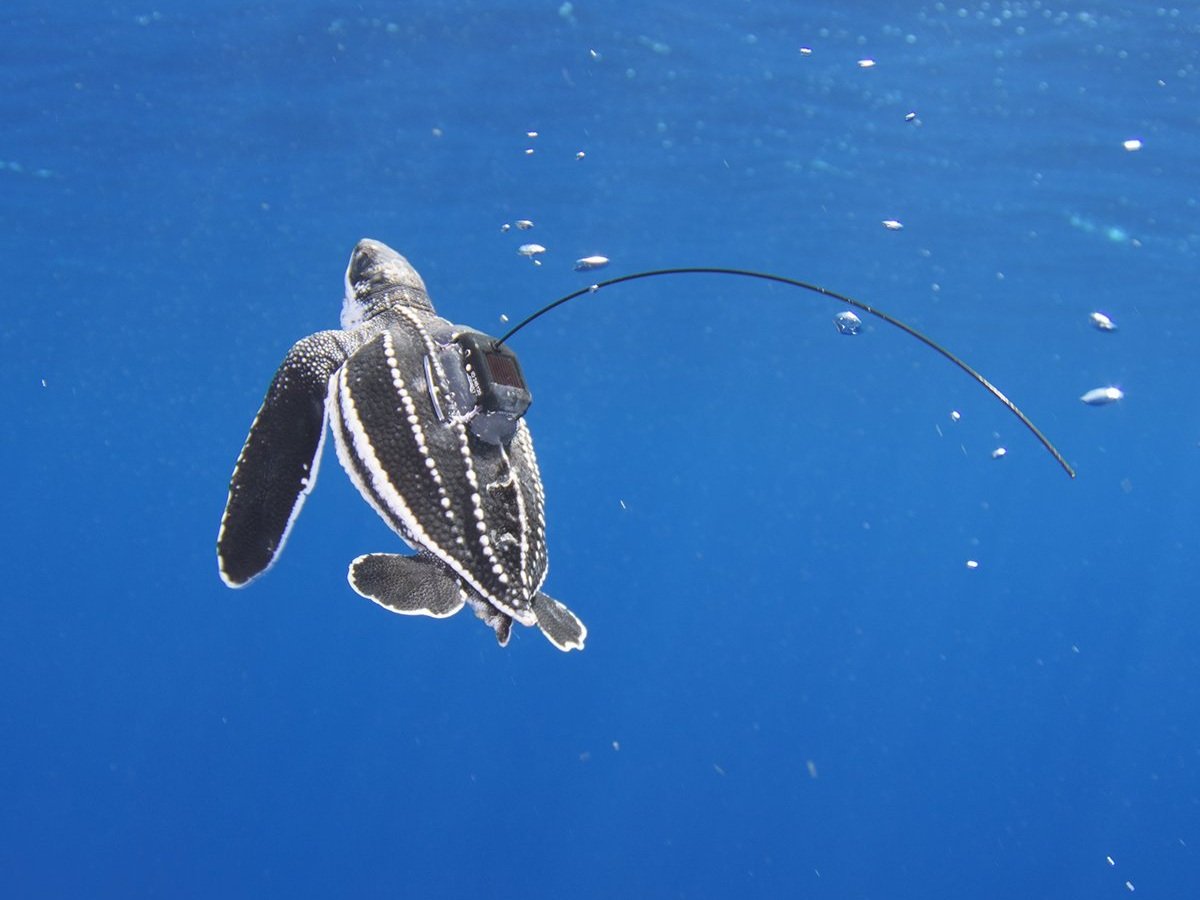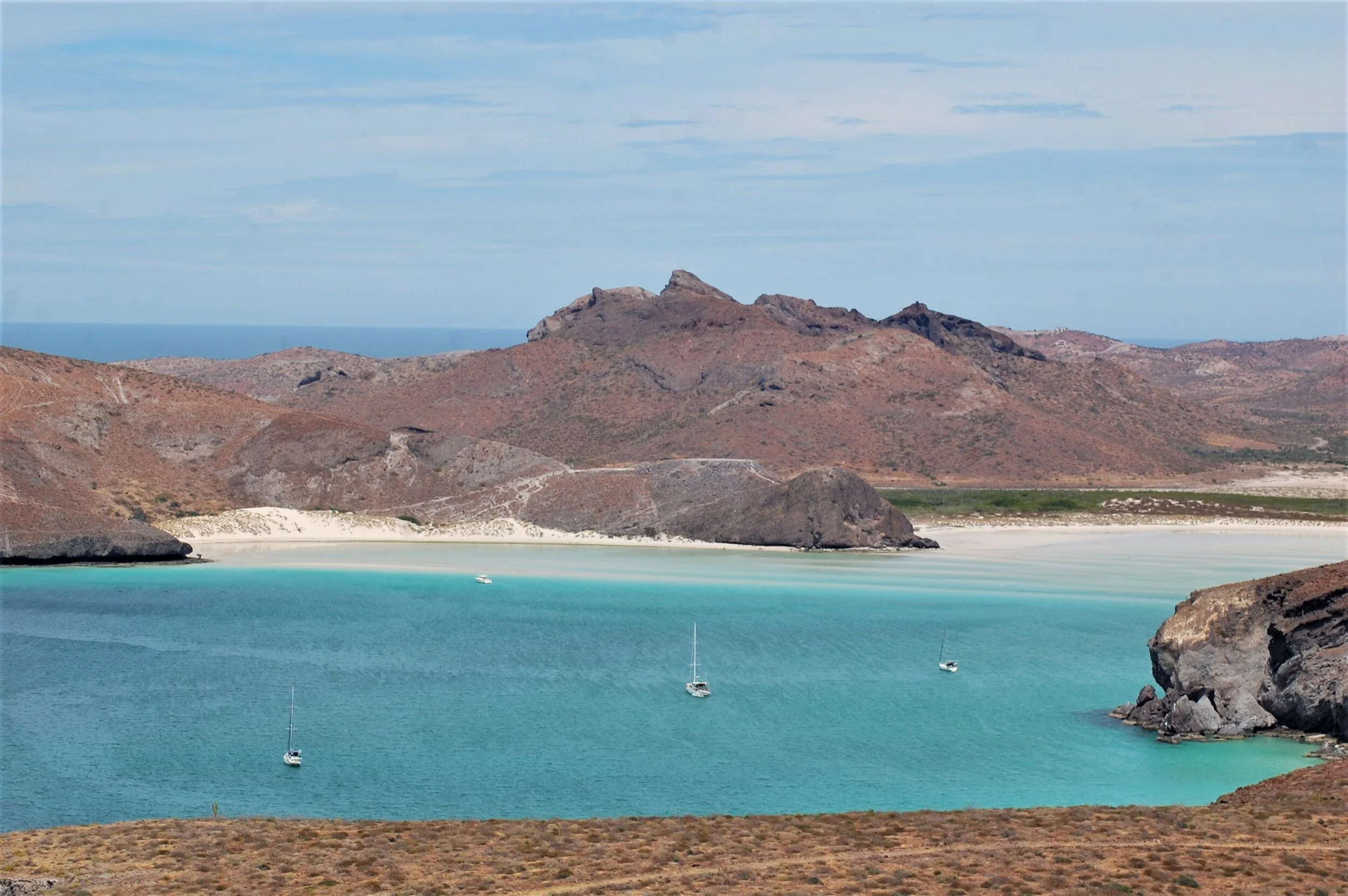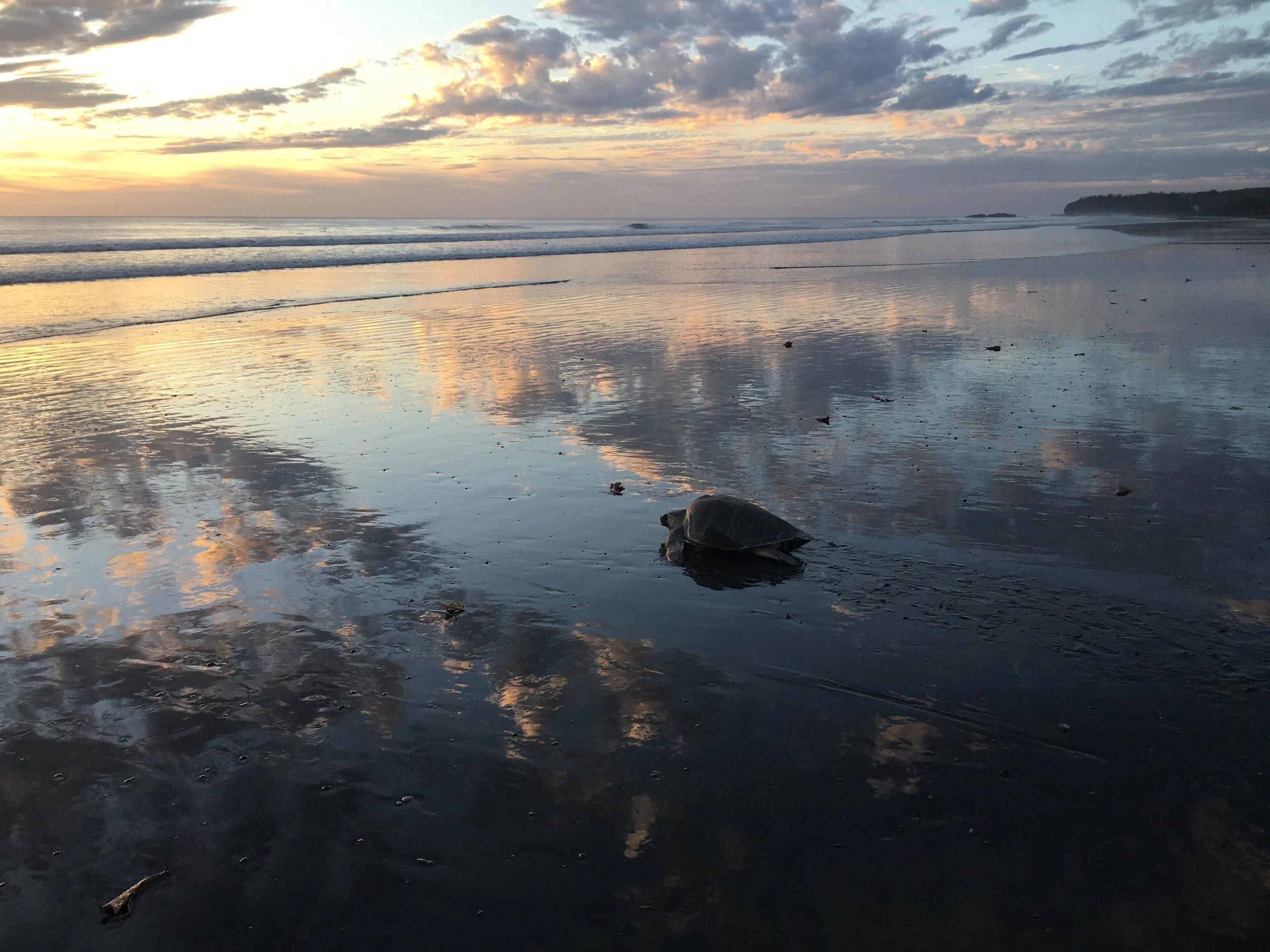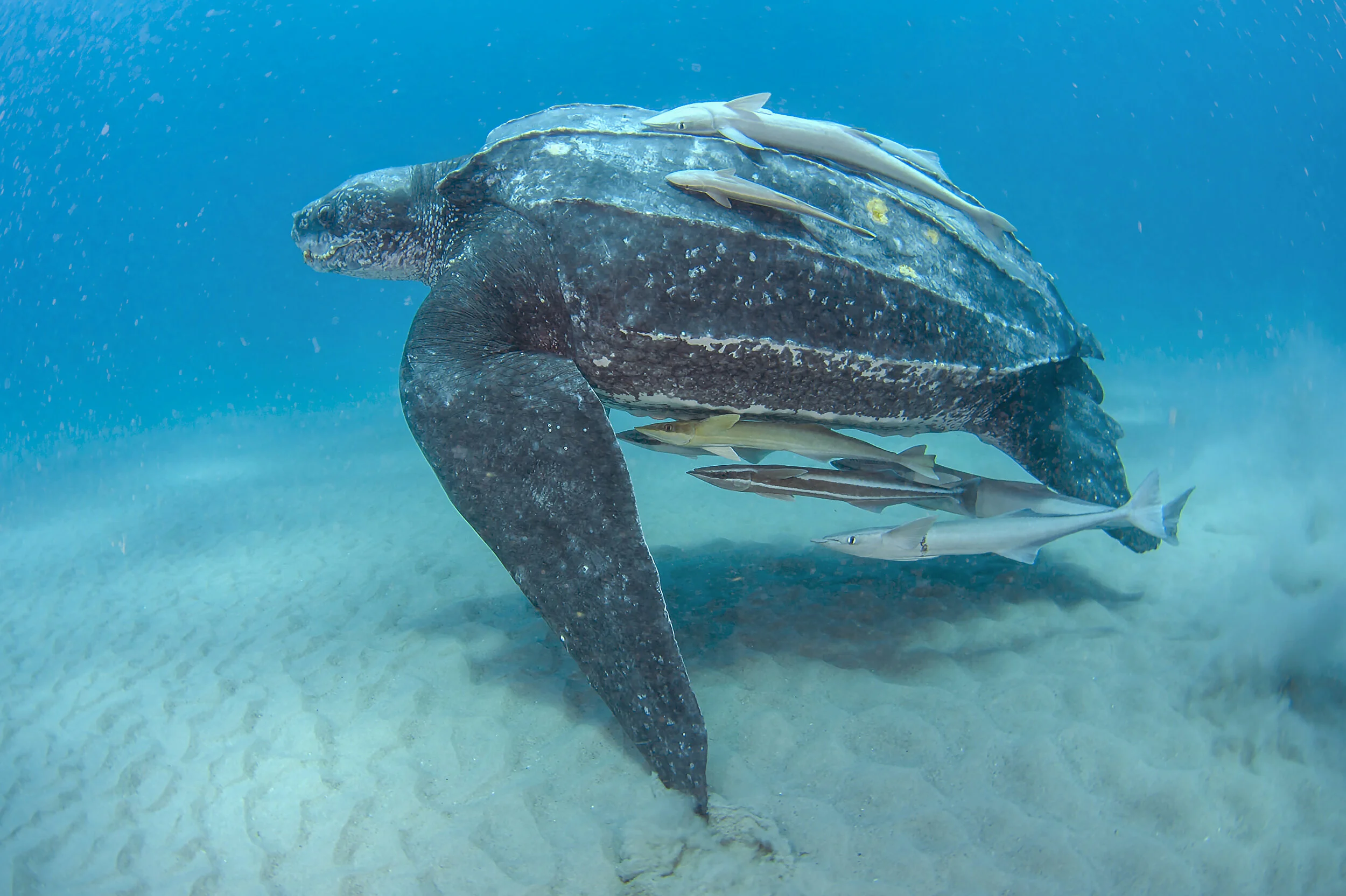Data collected at nesting beaches give us only a brief glimpse into sea turtles’ intricate life histories. Satellite tags are one of the best tools available to collect data on sea turtle movements and behaviors in marine habitats. But where tags are deployed matters. Deploying tags at nesting beaches means we are limiting our research scope to the females within a population that are nesting in a given year.
Discovering the Origins of Leatherbacks in the California Current
At the turn of the millennium, the origin of leatherback turtles in California waters was unproven. Many assumed they originated from nesting beaches in Mexico or Costa Rica; few could have imagined the extent of their travels across the entire Pacific Ocean. We know now that West Pacific leatherbacks only make their epic trans-Pacific migration about every three to five years. Unfortunately, the batteries on early satellite tags didn’t last long enough to track their whole migration.
Saving Sea Turtles with Technology
You might not think of someone behind a desk as working on the frontlines of sea turtle conservation, but Upwell’s Oceanographic Researcher, Tony Candela is doing just that. Tony is incorporating mathematics and oceanography to simulate the movements of hatchling and juvenile sea turtles to advance protections for them at sea.
Upwell Featured in Carmel Magazine
A bird's eye view on sea turtles in La Paz Bay
Amidst the Coronavirus shutdown, citizen scientists quarantining on their sailboats in Mexican waters continue to report their sea turtle sightings via Upwell’s Sea Turtle Spotter project. The sightings reported by the citizen scientists are astonishing. Following on these reports, Upwell’s resident researcher in Mexico, Stephanie Rousso, arranged with a local pilot to take to the sky for a bird’s eye view of sea turtle distribution around the southern end of the Baja California Peninsula.
Telling Stories of the Ocean through Photography - Kip Evans
Kip Evans is an award-winning conservation focused underwater filmmaker and photographer. Kip is based in Carmel, California, not far from Upwell’s headquarters. He works on a range of projects with non-profits or his Mission Blue team telling the stories of the ocean. We were fortunate to spend some time with Kip recently to learn about his underwater experiences with turtles and more.
Living the Dream: Life as a Scientist Who Studies Sea Turtles
One of the first things people say to me when they find out I’m a scientist that studies sea turtles is: “Wow, you are living everyone’s childhood dream!”. I am living my childhood dream, though my day-to-day work may be different from what most people expect when they think of being a marine biologist. So, what is it really like?
The Arrival
Arribada roughly translates to “arrival”, but in so many ways, it’s an understatement. Turtle nesting on Ostional Beach occurs year-round, but hits a peak in the rainy season between August and November. Each month on the last quarter of the full moon, olive ridley sea turtles gather off the coast of Ostional and prepare to lay their eggs en masse. The mass nesting of the arribada corresponds with the evening high tide, and for a few nights each month hundreds to thousands of sea turtles emerge from the sea to lay their eggs.
Engaging citizen scientists in the sailing community to promote sea turtle conservation
Inspired by Upwell’s collection of citizen science data to advance protections for sea turtles at sea, three biologists--informally dubbed “the turtle girls”--resolved to join the caravan of boats on the Baja Haha sailing rally to teach sailors and cruisers how to identify and report sea turtle sightings during the Baja Ha-Ha.















